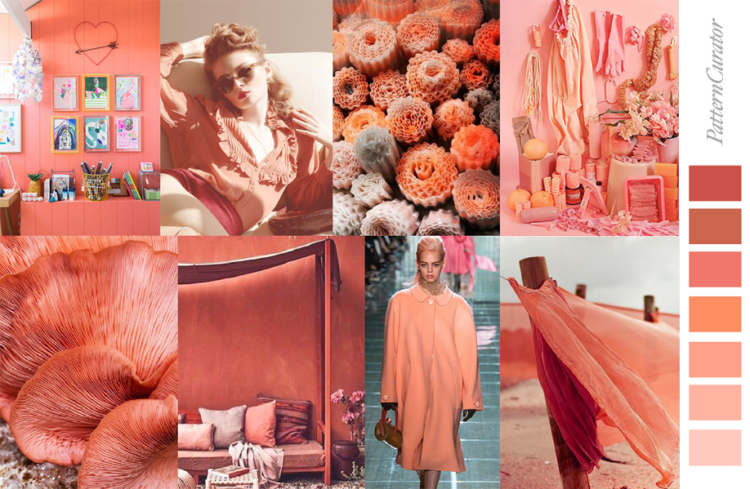
Have you just recently gotten into decorating your home fashion mood board, but are having trouble picking the colors that you want to use? Maybe it’s hard for you to decide on just one color for walls and furniture. To help with this dilemma, this blog post is a guide to how to choose colors in order to create a cohesive look and feel in your home.
Introduction
- Introduction
Adding color to your home can be a fun way to change up your decor, add some life and vibrancy, and help you feel more comfortable and happy in your space. Whether you’re looking for a quick and easy way to amp up your décor or want to create a more comprehensive mood board that will inspire you for years to come, there are plenty of other ways to incorporate color into your home using a mood board fashion mood board.
- What Is A Mood Board?
A mood board is simply a collection of images, sketches, or ideas that help you visualize the look and feel of your desired space. You can use it as a reference when designing rooms or even entire homes, or simply as inspiration when deciding on furniture pieces, accessories, or painting colors fashion mood board.
- How To Create A Mood Board
You don’t need any special tools or supplies to create a mood board – just some creativity and eyesight! – so it’s perfect for any level of DIYer. Plus, once
What is a Mood Board?

A mood board is a visual tool that can be used to inspire and help you plan your home’s design. It can be as simple or complex as you want it to be, but the basic idea is to use it as a way to get creative and think about color in different ways. When creating your mood board, make sure to keep the following tips in mind:
Choose Colors That Reflect Your Personality
First and foremost, choose colors that are reflective of your personality. This means that if you’re someone who loves bright colors, go for them! However, if you prefer more muted tones, go with those too. The point is to use colors that will help you feel comfortable in your home and reflect your own style fashion mood board.
Think About What You Want To Accentuate
Once you have selected a few colors that represent who you are, it’s time to think about what other features of your home might benefit from a touch of color. For example, if you have a room that is typically dark and moody (like an office), using brighter colors might make it feel more welcoming. Or if your kitchen always tends to stay clean but could use some extra pizzazz, adding brighter shades of green or yellow could do the trick. The key here is to think about what aspects of your home look good with color and go from there!
Create Mood Boards Based On Specific Needs And desires
Another thing to
How to Create Your Own Mood Board

There are endless ways to incorporate color into your home using a mood board fashion mood board. Here are five tips for creating one:
- Start with an idea. Before starting to create your board, come up with an idea or inspiration for the colors you want to use. This way, you’ll be able to narrow down your choices more easily and make sure that every color goes well together.
- Use neutrals as a starting point. Once you have an idea of the colors you want, start by choosing neutrals in those colors. This will help bring the overall look of the board together more effectively and make it easier to mix and match different elements of the board later on.
- Add pops of color . Once you have your neutrals down, spice things up by adding pops of brighter or darker colors near the edges of your board. This will add contrast and energy while still keeping everything within the same general palette.
- Use texture as another source of color . Texture can also be a great source of color when designing a moodboard—think about adding bumpy textures, printed fabric swatches, or even small pieces of furniture that have unique details (like suede chairs!).
- Let your imagination run wild . When creating a mood board, don’t be afraid to let your imagination run wild!
Inspiration for a Mood Board
Creating a mood board can be a great way to get inspired for your color scheme in your home. There are many different ways to create a mood board, so there’s sure to be something that works for you. You can use Pinterest, Instagram, or even old catalogs to help get started. Once you have an idea of the colors you want to use, it’s time to start gathering some inspiration. Look through magazines and online sources for some interior design ideas that feature similar colors. Take pictures or sketches of any ideas you like and save them on your board. Once you have a good selection of images, it’s time to start thinking about how you want your walls and furniture to look. Decide on a base color and then choose other colors that will enhance or contrast it. Be creative and think outside the box – after all, this is your home!
6 Ways To Incorporate Color Into Your Home Using A Mood Board
There are endless ways to incorporate color into your home using a mood board. Whether you’re looking for subtle pops of color or something more dramatic, Mood Boards can help you find the perfect palette for your space. Here are some tips for creating a successful mood board:
- Start with an idea. Before creating your board, come up with a specific theme or message you want to communicate to visitors. This could be anything from calming colors to energizing shades.
- Choose your colors wisely. Make sure that the colors you select work together harmoniously and accentuate each other instead of fighting against each other. A good rule of thumb is to use 10-15 different colors in your board, depending on the size and complexity of your project.
- Collaborate with friends and family members! Having people involved in the design process will help give your board a more personal feel, as well as giving you ideas that may not have occurred to you on your own. Plus, their input can often result in interesting combinations of colors that you wouldn’t have considered otherwise!
- Let inspiration take over! Once you’ve started filling out your mood board, let it flow without judgement or hesitation – don’t try too hard to stick to a plan (that’s why it’s called a Mood Board after all!). The goal is simply to get creative and allow yourself freedom to experiment.
- Keep it fresh! If you start seeing themes or messages emerging
Conclusion
We hope that this article on incorporating color into your home using a mood board has been helpful. Thanks for reading!






Thanks for sharing. I read many of your blog posts, cool, your blog is very good. https://www.binance.info/de-CH/join?ref=FIHEGIZ8